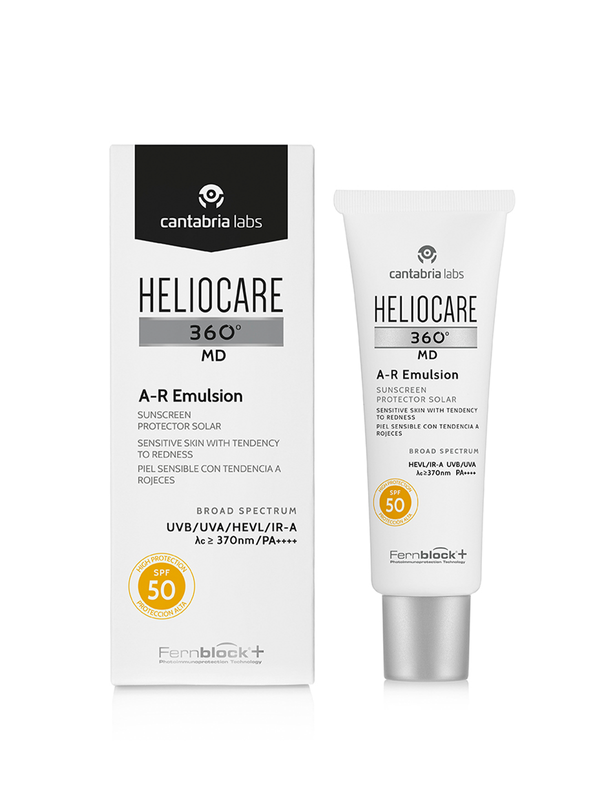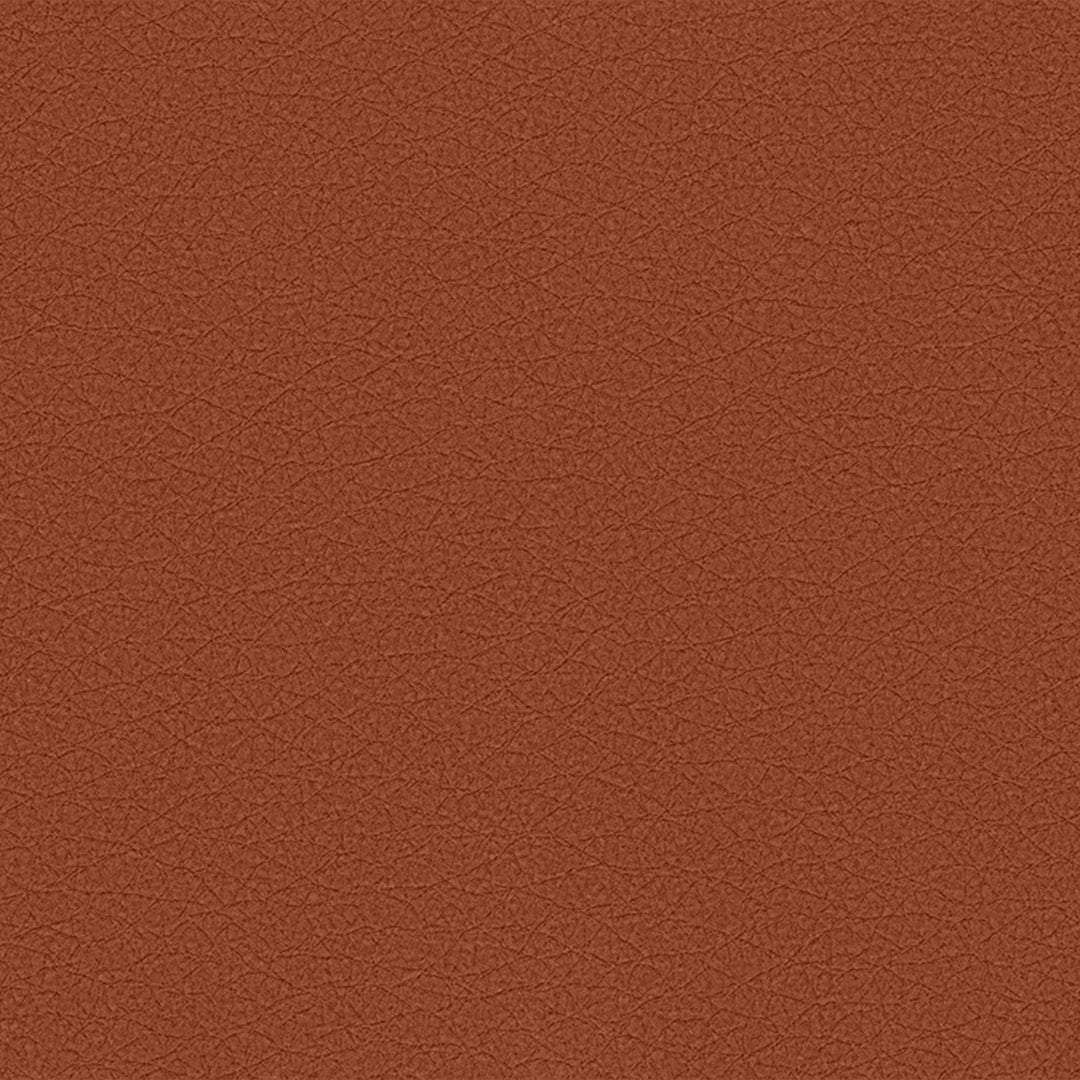Heliocare’s Winter Heroes: A-R Emulsion
When our skin is exposed to daylight, a number of reactions take place, leading to redness, dryness, pigmentation, wrinkles and more. At a much deeper level, a chemical change occurs within our skin cell DNA. This DNA is extremely important, as it works to repair damages and ensure each cell functions properly. Sometimes, however, our DNA can’t keep up with repairing every damage, which is what leads to permanent genetic mutations and skin cancer.
The single best way protect our skin from each of these reactions is to apply a broad spectrum, high factor sun protection product, every single day. This provides a top layer of defence on the skin, fighting against the short and long-term effects of sun damage. It will also help to manage existing skin conditions, including rosacea and redness-prone skin.
Triggers for rosacea and redness
It’s common to experience rosacea and redness with the condition thought to affect around one in ten people in the UK1. Those who suffer with rosacea experience symptoms including flushing, swelling, visible blood vessels and breakouts. Some people may also notice a thickening of the skin. In approximately 50% of cases, eye problems may also be encountered, such as feelings of itchiness, burning and dryness, along with sensitivity to light and eyelid inflammation.
There are many triggers for rosacea and redness-prone skin. As we’ve mentioned, exposure to sunlight can often trigger it, which is why sun protection should always be worn even in the winter months. Other triggers include strenuous exercise, stress and anxiety, alcohol, caffeine, hot drinks, spice, and excess sugar. These triggers either cause vasodilation2, whereby our blood vessels become wider, or inflammation, when our immune response sends inflammatory cells to attack a threat. For long-term sufferers of rosacea and redness-prone skin, triggers are easily identified and can therefore be avoided where possible. However, when the temperature dips and Christmas lurks on the horizon, there are additional triggers that are more difficult to avoid.
In the wintertime, a common cause of flare-ups is dry air, which exacerbates skin redness, dryness and irritation. Windburn is also problematic for redness-prone skin. At the same time, warm indoor temperatures aggravate rosacea, making winter a particularly difficult time for sufferers. These factors, combined with heightened stress levels and extra booze and sugary treats, means the festive season can really take its toll on the skin.
Who suffers from rosacea, and why?
Rosacea is most common in women and those with lighter skin types. This is because light skin has less pigment to conceal the redness. Rosacea typically affects the face, but can be experienced on the neck and chest. While environmental factors play a big role in flare-ups, genetics also play a part in skin redness and rosacea; some people are simply more likely to suffer. We do not yet know the exact gene that causes rosacea, however, it’s likely a combination of our skin cell function, skin blood supply and immune system that determines whether we experience rosacea or not.
How to prevent and correct skin redness
Though the physical symptoms of rosacea and redness-prone skin may be considered mild, many people report feelings of embarrassment, low confidence and low self-esteem. That’s why it’s so important to treat the condition effectively; once you understand your triggers, take the right measures and the look of your skin improves, you’ll start to feel much better psychologically and emotionally3.
So how can you best treat your redness-prone skin during the winter4? First, protect your face from harsh weather to prevent any flare-ups. You can do this with a light scarf (avoid wool or rough fabrics). Limit time outdoors, especially when it’s very cold and windy. Also, try to limit your consumption of hot drinks, caffeine and alcohol, and any other dietary triggers you’re aware of. If you plan to spend a lot of time cooking or baking, be sure to schedule breaks from the heat of the kitchen. And of course, try to avoid stress - though this is often easier said than done!
We also can’t forget about the importance of daily broad spectum sun protection against UVA, UVB, visible light and infrared-A. Protection against these harmful forms of solar radiation is key in managing redness and rosacea. However, it can be difficult to identify a product that doesn’t irritate your sensitive skin. That’s where Heliocare 360° A-R Emulsion comes in; a light, nourishing fluid that’s scientifically designed for skin prone to redness and sensitivity.
Protect your skin with Heliocare 360° A-R Emulsion
The A-R Emulsion from Heliocare 360° provides the highest levels of protection against the full spectrum of light, including UVA, UVB, visible light and infrared-A, all of which are present throughout the year, whatever the weather.
Our A-R Emulsion features an innovative anti-redness system. Its silky formulation has three levels of action that protect, correct and prevent redness. It achieves this by combining restorative Physavie (an active anti-inflammatory ingredient that controls skin temperature and stimulates natural anti-oxidant defenses); soothing Rosabora (which promotes the reduction of redness and decreases the appearance of blood vessels); and anti-oxidant Glutathione (which stimulates the immune response and detoxifies skin cells). These three powerful components work in unison to strengthen and repair the skin barrier, whilst hydrating and soothing the skin.
As with every product in the Heliocare 360° range, our A-R Emulsion contains Fernblock, a patented plant extract that’s scientifically proven to prevent and repair sun damage. Fernblock is also shown to regulate certain factors involved in the development of skin redness, as well as helping to prevent the inflammatory cascade and protect our skin’s immune system. What’s more, our gorgeous A-R Emulsion contains a light pigment that unifies the skin tone and blurs blemishes, offering immediate redness correction.
After using Heliocare 360° A-R Emulsion, 89% of users reported reduced irritation, a reduced number of breakouts and better self-confidence. 94% of users also said the product reduced their skin’s redness. It really is the perfect choice for skin with a tendency to redness, even the most sensitive skin types. Shop Heliocare 360° A-R Emulsion today.
In the article

- For sensitive skin prone to redness
- Suitable for Fitzpatrick skin types I-IV
- SPF50 & PA++++
- Reduces redness and soothes the skin
References:
1 Dr Oliver Starr (2018). Rosacea. [online] Patient.info. Available at: https://patient.info/skin-conditions/skin-rashes/rosacea.
2 Weiss, E. and Katta, R. (2017). Diet and rosacea: the role of dietary change in the management of rosacea. Dermatology Practical & Conceptual, 7(4), pp.31–37. doi:10.5826/dpc.0704a08.
3 www.nhsinform.scot. (n.d.). Rosacea symptoms and treatments. [online] Available at: https://www.nhsinform.scot/illnesses-and-conditions/skin-hair-and-nails/rosacea.
4 www.aad.org. (n.d.). How to prevent rosacea flare-ups. [online] Available at: https://www.aad.org/public/diseases/rosacea/triggers/prevent.






